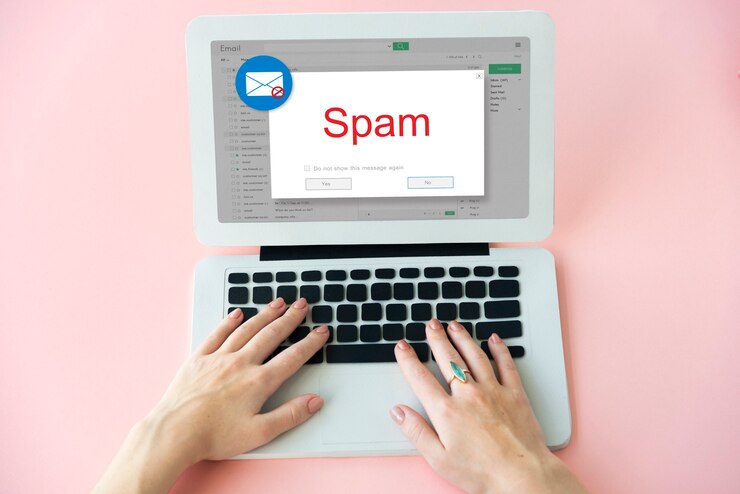Email is a critical communication tool in our personal and professional lives. Whether you’re sending newsletters, business proposals, or personal messages, it’s crucial that your emails land in the recipient’s inbox rather than being relegated to the dreaded spam folder. Spam emails are often annoying, untrustworthy, and potentially harmful. To ensure your emails consistently reach their intended recipients, it’s essential to understand how to prevent them from being marked as spam.

In this comprehensive guide, we will explore various strategies and best practices to stop your emails from going to the spam folder. We’ll reference information from two valuable sources: PointerPro’s “How do I avoid my emails being marked as spam?” and SendGrid’s blog post “10 Tips to Keep Email Out of the Spam Folder.” By combining their insights with additional tips, you’ll be better equipped to maintain a healthy email deliverability rate.
The Spam Folder
Before delving into how to prevent emails from landing in the spam folder, it’s crucial to comprehend why this happens. Email service providers (ESPs), such as Gmail, Yahoo, and Outlook, employ advanced algorithms and spam filters to protect users from unwanted, potentially harmful emails. These filters consider various factors when deciding whether an email is spam or not, including content, sender reputation, and user behavior.
Key factors that can lead your emails to be marked as spam include:
1. Low Sender Reputation: If you have a poor sender reputation, your emails are more likely to be flagged as spam. Factors affecting your reputation include your email sending history, user engagement, and spam complaint rates.
2. Content and Subject Lines: Emails containing certain keywords, phrases, or attachments commonly associated with spam are more likely to be flagged. This includes excessive use of capital letters, poor grammar, and overly promotional language.
3. Lack of Authentication: Emails that lack proper authentication, such as SPF (Sender Policy Framework) and DKIM (DomainKeys Identified Mail), are often treated with suspicion.
4. Sending to Inactive or Purchased Lists: Sending emails to inactive or purchased email lists can harm your sender reputation and increase the chances of being marked as spam.
5. High Bounce Rates: A high percentage of undelivered emails (bounces) can signal to ESPs that your sender practices are questionable.
Now, let’s explore the strategies and best practices to prevent your emails from going to the spam folder, drawing from the insights provided by PointerPro and SendGrid, and adding some additional recommendations.
1. Use a Recognizable “From” Address and Domain
One of the most critical elements in email deliverability is using a recognizable “From” address and domain. Ensure that the “From” address clearly identifies your organization or you as the sender. Using a trustworthy domain associated with your organization adds credibility. Avoid using generic or suspicious-looking addresses, as these can raise red flags for spam filters.
Additional Tip: Implement email authentication protocols like SPF and DKIM to further establish your domain’s authenticity and prevent spoofing.
2. Maintain a Good Sender Reputation
Your sender reputation is a key determinant in whether your emails land in the inbox or spam folder. To maintain a positive sender reputation:
- Send relevant, engaging, and valuable content to your subscribers.
- Monitor your email list for invalid or inactive addresses and regularly clean it.
- Promptly address and unsubscribe users who request it.
- Encourage recipients to add your address to their contact list.
Additional Tip: Use an email verification service to ensure the validity of your email list.
3. Create Quality Content
Spam filters often analyze the content of your emails, so it’s crucial to ensure your content is well-crafted and free from spam triggers. This means avoiding excessive use of capital letters, excessive punctuation, and misleading subject lines.
- Craft clear, concise, and relevant subject lines.
- Avoid using all caps or excessive exclamation points.
- Provide a plain-text version of your HTML emails for accessibility.
4. Monitor Engagement Metrics
Email engagement metrics, such as open rates, click-through rates, and spam complaints, play a significant role in email deliverability. ESPs use these metrics to gauge the relevance of your emails.
- Regularly analyze these metrics and adjust your email strategy accordingly.
- Pay attention to recipients who consistently engage with your emails and those who don’t.
- Implement a re-engagement campaign for inactive subscribers.
5. Properly Segment Your Email List
Segmenting your email list allows you to send targeted content to specific groups of recipients. This increases the relevancy of your emails and improves engagement, reducing the likelihood of being marked as spam.
- Segment your list based on demographics, preferences, and behavior.
- Send tailored content to each segment.
- Avoid sending the same email to your entire list without considering their interests.
6. Optimize Your Email Deliverability
Email deliverability depends on various technical aspects, such as server configuration, IP reputation, and email sending practices. Ensure the following technical aspects are optimized:
- Maintain a dedicated IP address for sending email.
- Use reputable email service providers or email delivery services.
- Implement DMARC (Domain-based Message Authentication, Reporting, and
- Conformance) to protect your domain from spoofing.
Additional Tip: Regularly check your IP reputation on various blacklists and take action if necessary.
7. Set Up Feedback Loops
Feedback loops are mechanisms offered by email providers that notify you of spam complaints from your recipients. By setting up feedback loops, you can promptly remove complainants from your email list and reduce the chances of your emails being marked as spam in the future.
- Sign up for feedback loops with major email providers.
- Act on spam complaints promptly and professionally.
8. Consistent Email Sending Frequency
Sending emails too frequently or too sporadically can trigger spam filters. It’s essential to establish a consistent sending frequency that aligns with recipient expectations.
- Monitor recipient preferences for email frequency.
- Set up clear expectations during the subscription process regarding email frequency.
- Allow recipients to adjust their email preferences easily.
9. Avoid URL Shorteners and Suspicious Links
URL shorteners can obscure the destination of a link, which is a common technique used in phishing and spam. To avoid triggering spam filters, use clear, trustworthy URLs.
- Use your own domain for links when possible.
- Avoid linking to suspicious or blacklisted domains.
10. Testing and Deliverability Tools
Before sending your email campaigns, it’s wise to test your emails using deliverability tools. These tools can help you identify potential issues and optimize your emails for better deliverability.
- Run tests to check for spam triggers.
- Use email testing services to preview how your emails will appear in different email clients.
Conclusion
Preventing your emails from being marked as spam is crucial for effective email marketing and communication. A healthy sender reputation, quality content, and technical optimization are all essential elements in maintaining high email deliverability. By implementing the strategies outlined in this guide, drawing from the insights provided by PointerPro and SendGrid, and considering additional recommendations, you can significantly reduce the risk of your emails ending up in the spam folder. Remember that maintaining a strong sender reputation and providing value to your recipients are key to successful email marketing.




